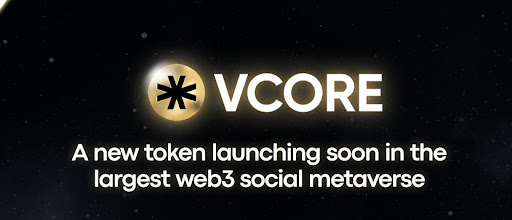
Navigating Web3 can be tricky, both for existing brands attempting to cement themselves in the space or for new startups looking to gain traction. Social metaverse IMVU, having first navigated the landscape of web2, is successfully transitioning to Web3 after almost two decades of growth. Additionally Together Labs, its parent company, created MetaJuice, a subsidiary designed to strategically bring in blockchain technology to the platform.
The Path to Web3
IMVU, which is currently the world's largest Web3 social metaverse, has over 1 million active consumers using their native crypto wallet and its token VCOIN. There are more than 3.8 million monthly active users on the platform that is launching the VCORE utility and governance token soon. It is safe to say that the transition from web2 to Web3 has been a successful feat for the project.
But, how did they do it?
Transition Beginnings
It started at the height for new online social products, with the launch of IMVU in 2004. The platform allowed for people to use 3D avatars to meet friends, play games and create and purchase digital items. IMVU was one of the first projects to introduce what we know today as digital collectibles and it pioneered digital user-created assets. To date, there are over 60 million digital items available on their catalog.
IMVU's journey to Web3 has been very calculated this isn't just something they threw themselves into to follow the trends. MetaJuices' approach has five key elements for transitioning into the space that other brands can clearly follow.
One: Landscape
Having the right understanding of how the Web3 space shifts and how to prepare for it gives a massive advantage to those who pay attention. The audience has to be ready for the message.
MetaJuice has shown an excellent understanding of the current landscape. Being the first to market is often heavily valued in Web3, but even if the tech already existed, the timing wasn't right yet back in the 2010s. That leads into the next key point of this list: timing is everything.
Two: Timing
Those who are veterans of the space know the importance of picking the right moment. When the crypto bull run of late 2020 helped the ecosystem mature into the 2021 NFT summer, MetaJuice created VCOIN. The digital currency was formed after securing a no-action relief from the U.S. Securities and Exchange Commission, ensuring that IMVU could sell VCOIN as a transferable non-security.
This launch added another layer of utility for IMVU's existing users — a step towards full metaverse onboarding.
Three: Technology
Aside from timing, the majority of other failures in Web3 have to do with not understanding the tech. NFTs for example are an incredible tool for digital inscription on an irrefutable network, but improper utilization of Web3 technology inevitably leads to liquidity-drained projects with very few users.
MetaJuice kept it simple and it worked. Since they already owned a substantial digital market, properly applying token technology to assets was a simple way for users to get accustomed to and understand how to use them even without Web3 knowledge.
Four: Consumer Base
MetaJuice found the right balance between attracting Web3 native users and maintaining their pre-existing customer segment. Most people don't even want to know that they're using Web3 tools, but almost all consumers care about user experience and what value they will get from a product.
IMVU is giving its users more chances to shape their favorite metaverse. VCOIN and upcoming VCORE's integration incentivize all kinds of users to participate in a real online economy. With utility for digital assets and a solid social experience, the sky's the limit.
Five: Roadmaps
Overall, MetaJuice has found success by creating a roadmap that is accomplishable, stays on top of developing technologies, has long term benefits for its consumers, and is focused on growing at a constant pace. Properly executing partnerships and creating clear roadmaps is the final step of a good Web3 transition.
Collaborations are another way to cross-pollinate consumer groups with other industry leaders. MetaJuice has done this in the past by partnering with projects like ImmutableX.
Many products fail due to their lack of knowledge, but following these steps will ensure a seamless path from web2 to Web3. For IMVU, their next step is the VCORE token which will bring governance and utility aspects to users. While not available in the United States or Canada, it will support this online social culture with new Web3 additions. Read more about VCORE on the official website: getvcore.io









